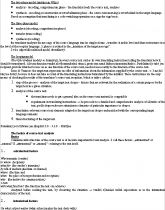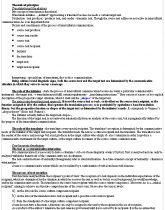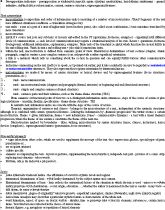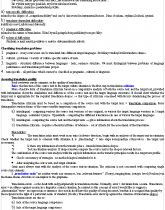Projekt: Nord, Christine - Text Analysis in Translation
Zobrazit detaily | OblíbenýTheory, Methodology, and Didactic Application of a Model of Translation-Oriented Text Analysis
Poznámky jsou vybrané od zaèátku knihy až do strany: 173, kde zaèínají komentované Sample texts. Závìr knihy - strana 232 - 237 také vypsány.
Theoretical principles
Translatological foundations
My concept of translation is functional.
Translation initiates - „initiator“ approaching a translator because he needs a certain target text.
Distinction - text producer - produces text, text sender - transmits text. Though the source text addressee not active in intercultural communication, he is an important factor.
Factors and constituents of the process of intercultural communication:
source text producer
source text sender
source text
source text recipient
initiator
the translator
target text
target text recipient
Interpreting - special form of translation, face-to-face communication.
Being culture-bound linguistic signs, both the source text and the target text are determined by the communicative situation in which they serve to convey a message.
The role of the initiator - starts the process of intercultural communication because he wants a particular communicative instrument : the target text. translation must fulfil certain requirements - „translating instructions.“ They consist of a more or less explicit description of the prospective target situation, which I shall call the „skopos“ of the target text.
The main point about functional approach: It is not the source text as such, or its effect on the source text recipient, or the function assigned to it by the author, that operates the translation process, as is postulated by equivalence-based translation theory, but the prospective function or skopos of the target text as determined by the initiator’s needs. It corresponds to Vermeer’s „skopos theory“ (Reiss and Vermeer).
The initiator actually defines the target text skopos.,
The function of the target text is not arrived at automatically from an analysis of the source text, but is pragmatically defined by the purpose of the intercultural communication.
The role of the translator - the translator a very special recipient. The translator’s reception is determined by the communicative needs of the initiator of the target text recipient. The translator reads the text as a critical recipient and the translator. The translator is not the sender of the source text message but a text producer in the target culture who adopts sb. else’s intention in order to produce a communicative instrument for the target culture, or the target culture document of the source culture communication.
Text-linguistic foundations
The text as a communicative interaction
For communication it is necessary to have a situation = sub-set of non-linguistic events (Crystal). Text is analysed and can only be analysed within the framework of the communicative act-in-situation.
The text-centred notions of textuality (Beaugrande) refer to structural features. In action-oriented concept of textuality - situation is what matters.
A text is a communicative action which can be realized by a combination of verbal and non-verbal means.
Poznámky jsou vybrané od zaèátku knihy až do strany: 173, kde zaèínají komentované Sample texts. Závìr knihy - strana 232 - 237 také vypsány.
Theoretical principles
Translatological foundations
My concept of translation is functional.
Translation initiates - „initiator“ approaching a translator because he needs a certain target text.
Distinction - text producer - produces text, text sender - transmits text. Though the source text addressee not active in intercultural communication, he is an important factor.
Factors and constituents of the process of intercultural communication:
source text producer
source text sender
source text
source text recipient
initiator
the translator
target text
target text recipient
Interpreting - special form of translation, face-to-face communication.
Being culture-bound linguistic signs, both the source text and the target text are determined by the communicative situation in which they serve to convey a message.
The role of the initiator - starts the process of intercultural communication because he wants a particular communicative instrument : the target text. translation must fulfil certain requirements - „translating instructions.“ They consist of a more or less explicit description of the prospective target situation, which I shall call the „skopos“ of the target text.
The main point about functional approach: It is not the source text as such, or its effect on the source text recipient, or the function assigned to it by the author, that operates the translation process, as is postulated by equivalence-based translation theory, but the prospective function or skopos of the target text as determined by the initiator’s needs. It corresponds to Vermeer’s „skopos theory“ (Reiss and Vermeer).
The initiator actually defines the target text skopos.,
The function of the target text is not arrived at automatically from an analysis of the source text, but is pragmatically defined by the purpose of the intercultural communication.
The role of the translator - the translator a very special recipient. The translator’s reception is determined by the communicative needs of the initiator of the target text recipient. The translator reads the text as a critical recipient and the translator. The translator is not the sender of the source text message but a text producer in the target culture who adopts sb. else’s intention in order to produce a communicative instrument for the target culture, or the target culture document of the source culture communication.
Text-linguistic foundations
The text as a communicative interaction
For communication it is necessary to have a situation = sub-set of non-linguistic events (Crystal). Text is analysed and can only be analysed within the framework of the communicative act-in-situation.
The text-centred notions of textuality (Beaugrande) refer to structural features. In action-oriented concept of textuality - situation is what matters.
A text is a communicative action which can be realized by a combination of verbal and non-verbal means.




